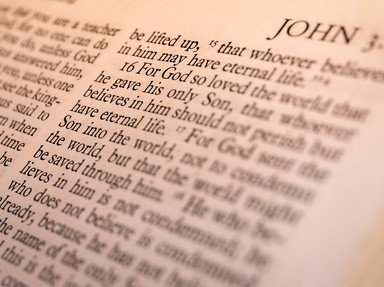Quiz Answer Key and Fun Facts
1. John has arguably the grandest opening of all the gospels. How does he describe Jesus in the gospel's first few words?
2. The gospel can be sub-divided into two sections. The first part (chapters 1-12) is often dubbed "The Book of Signs" and the remainder, "The Book of Glory". Which of the following features also distinguishes between the two?
3. John structures his gospel around miraculous signs and "I am" statements that are intended to convey the true nature of Jesus. Which of these is NOT among those "I am" statements?
4. In chapter 2, John records an event as marking the beginning of Jesus' public ministry. The other gospel writers include the same event at the start of his final week. Which story is this?
5. A Pharisee, also described as a member of the Jewish ruling council, comes to visit Jesus under cover of darkness. What is his name?
6. In John's gospel, the first public declaration that Jesus is the messiah comes from an unlikely source. Which of the following is true about the person whom Jesus engages in conversation by a well?
7. Curiously, John's gospel contains the only references to the individual actions of one of the apostles in particular. Which disciple is this?
8. In chapter 11, Jesus raises Lazarus from the dead, having initially ignored requests to come when told he was sick. What reason is given for this delay?
9. Judas Iscariot is the disciple who betrays Jesus to the religious authorities. In what way does John take a different approach to the other gospel writers in his portrayal of Judas?
10. John doesn't include details of the Last Supper in the same way that the other gospel writers do. He does, though, describe a meal at the same juncture. What happens in John's account?
11. In chapters 14, 15 and 16, Jesus repeatedly speaks of sending another counselor (or helper) to the disciples. To whom is he referring?
12. John, like the other gospel writers, describes how Peter "betrayed" Jesus three times in the courtyard of the High Priest's private residence. He also reveals how Peter was able to gain admittance to this courtyard. How was this done?
13. What are the last words that John records Jesus speaking from the cross?
14. What does Jesus do, in the gospel's final chapter, that illustrates the physical nature of his resurrection body?
15. The apostle John has traditionally been viewed as the author of the gospel. Which of the following factors has been used to question this claim?
Source: Author
glendathecat
This quiz was reviewed by FunTrivia editor
CellarDoor before going online.
Any errors found in FunTrivia content are routinely corrected through our feedback system.

